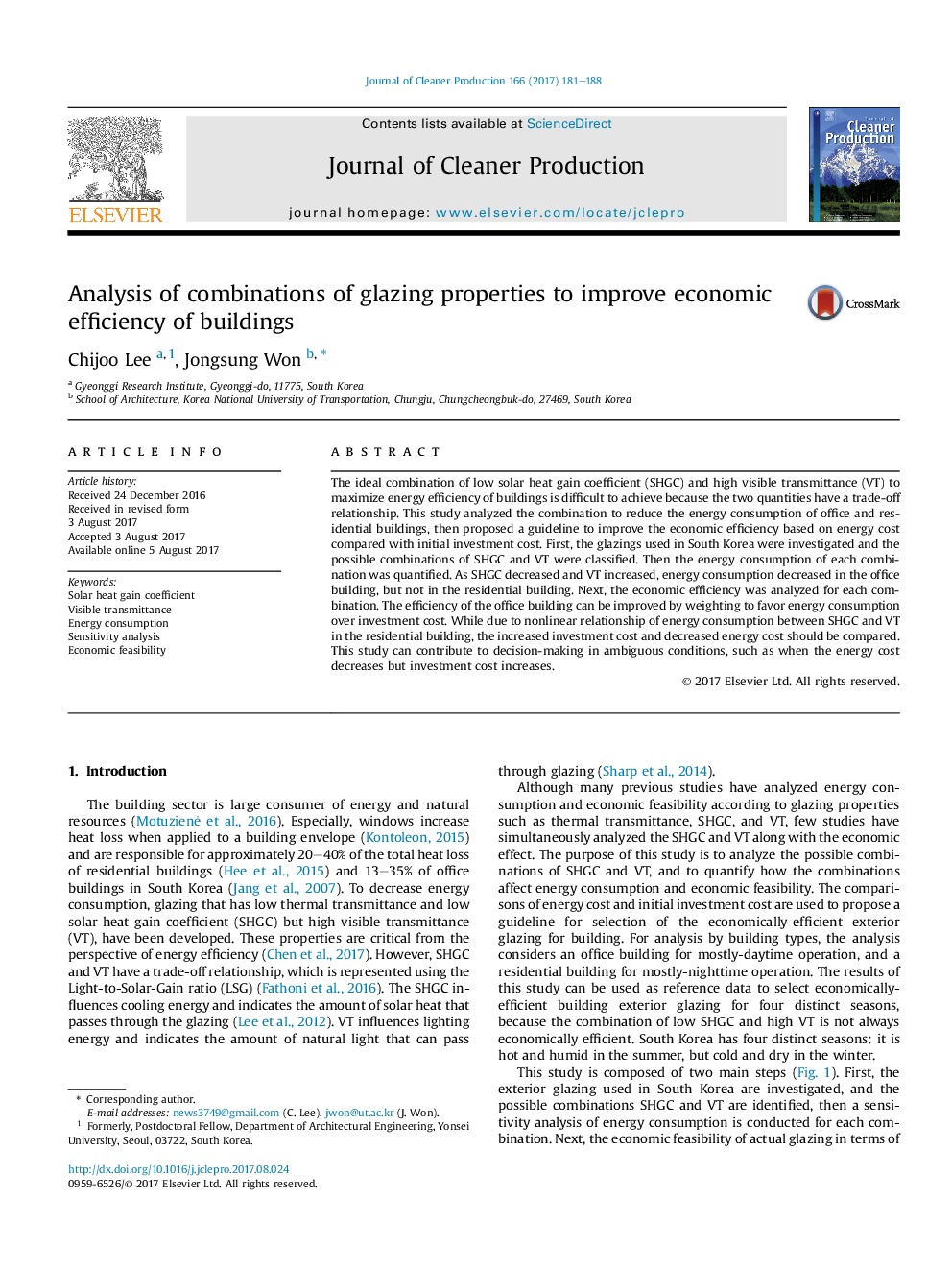| Article ID | Journal | Published Year | Pages | File Type |
|---|---|---|---|---|
| 5479895 | Journal of Cleaner Production | 2017 | 8 Pages |
Abstract
The ideal combination of low solar heat gain coefficient (SHGC) and high visible transmittance (VT) to maximize energy efficiency of buildings is difficult to achieve because the two quantities have a trade-off relationship. This study analyzed the combination to reduce the energy consumption of office and residential buildings, then proposed a guideline to improve the economic efficiency based on energy cost compared with initial investment cost. First, the glazings used in South Korea were investigated and the possible combinations of SHGC and VT were classified. Then the energy consumption of each combination was quantified. As SHGC decreased and VT increased, energy consumption decreased in the office building, but not in the residential building. Next, the economic efficiency was analyzed for each combination. The efficiency of the office building can be improved by weighting to favor energy consumption over investment cost. While due to nonlinear relationship of energy consumption between SHGC and VT in the residential building, the increased investment cost and decreased energy cost should be compared. This study can contribute to decision-making in ambiguous conditions, such as when the energy cost decreases but investment cost increases.
Keywords
Related Topics
Physical Sciences and Engineering
Energy
Renewable Energy, Sustainability and the Environment
Authors
Chijoo Lee, Jongsung Won,
